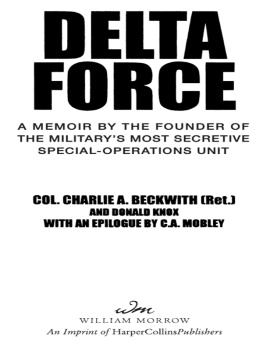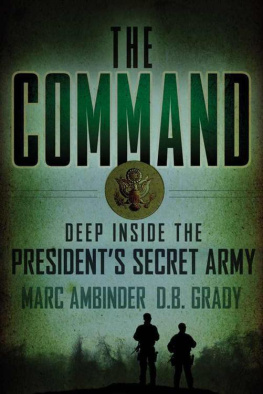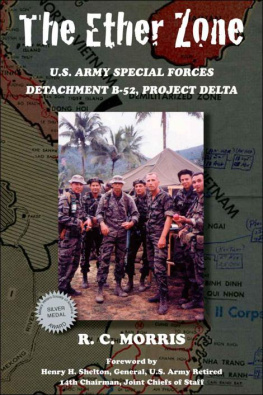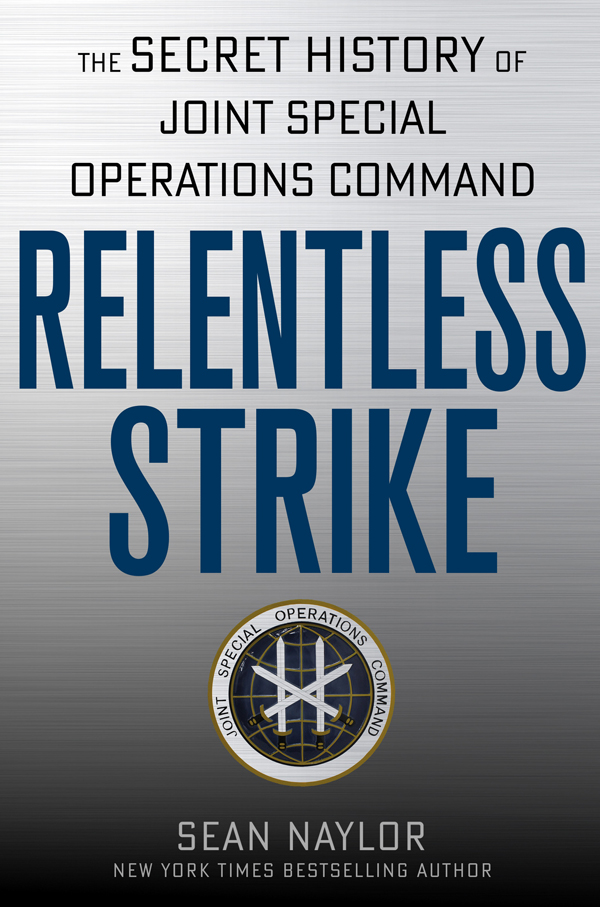Contents
Guide

The author and publisher have provided this e-book to you for your personal use only. You may not make this e-book publicly available in any way. Copyright infringement is against the law. If you believe the copy of this e-book you are reading infringes on the authors copyright, please notify the publisher at: us.macmillanusa.com/piracy.
For Duncan and Hannah Naylor
I began this project sure in the knowledge that researching and writing a book about a secret organization that controlled other secret organizations was going to be a challenge, and so it proved.
U.S. Special Operations CommandJoint Special Operations Commands administrative higher headquartersdeclined to assist in the project, other than to answer the occasional question. Several people who figure prominently in the events described in this book declined requests to be interviewed. Relentless Strike, the first full-length history of JSOC, is therefore built on two foundations.
The first of these consists of interviews I did arrange with scores of sources, most of whom spoke on background, meaning I could only identify them in a generic way, as in a senior SEAL Team 6 source, rather than by name. The fact that many of my sources held several different positions during the period covered by the book complicated matters further when it came to attribution. In most cases, I used an attribution (for instance, Delta operator) that applied to the position the source held during the events being discussed. This meant that sometimes the same individual might be referred to by different attributions in different chapters. However, a small number of individuals insisted that I refer to them by the same phrase (for instance, retired special operations officer) throughout the book.
The second foundation upon which the book rests consists of published works by other writers. No book about JSOC could or should be written in a literary vacuum. As the endnotes indicate, this book stands on the shoulders of scores of others that have touched on the command in whole or in part. Several deserve specific mention. The first of these is Steven Emersons Secret Warriors, which I found to be the most useful single volume about the covert operations of the 1980s. (At the outset I intended for my book to concentrate on JSOCs postSeptember 11 history, but I soon realized that an extensive discussion of the first two decades of the commands existence would be necessary in order to provide readers with the context necessary to frame the events that occurred later.) For the chapters dealing with the creation of JSOCs fearsome industrial-scale killing machine in Iraq, I relied heavily on three books: Task Force Black, by Mark Urban, which, while focusing on British special operations forces, contained a wealth of information about the overall JSOC campaign; The Endgame, by Michael R. Gordon and General Bernard E. Trainor, a masterful narrative of Americas war in Iraq, laced with telling details about the role played by JSOC; and My Share of the Task, by retired General Stanley McChrystal, who commanded JSOC during those critical years. The latter was one of several first-person accounts upon which I leaned for particular chapters. Others include Kill bin Laden, by Dalton Fury (the nom de plume of Delta officer Tom Greer), about the failure to get Osama bin Laden at Tora Bora, and No Easy Day, by Mark Owen (the pen name of SEAL Team 6 operator Matt Bissonnette) with Kevin Maurer, about the May 2011 mission that killed Osama bin Laden.
To the individuals at the heart of each of these foundationsthe sources who agreed to be interviewed by me, and the authors whose work preceded mineI am profoundly grateful.
As Marwan al-Shehhi turned United Airlines Flight 175 northeast above Trenton, New Jersey,
It was mid-afternoon in the Hungarian capital on September 11, 2001, and Army Major General Dell Dailey, head of Joint Special Operations Command, had just briefed senior embassy officials on a majorbut highly classifiedtraining exercise code-named Jackal Cave his organization was running across Europe.
Jackal Cave was a joint readiness exercise, or JRX, one of several that JSOC (jay-sock) conducted each year. Like most JRXs, it was nested in an even larger Ellipse exercise run by one of the U.S. militarys four-star regional commands, in this case European Command. Some JSOC personnel viewed the JRXs as essential opportunities to rehearse critical capabilities. Others thought they were counterproductive wastes of time designed mainly to support JSOCs budget, which had been steadily growing for two decades.
Born from the wreckage of 1980s Operation Eagle Claw, the United States failed attempt to rescue its hostages in Iran, JSOC was created that same year to give the United States a standing headquarters that could run similar operations in the future. But although its power, size, and influence had increased significantly since then, on September 11, 2001, the command remained a fringe presence on the U.S. military scene, with a narrowly circumscribed set of responsibilities that included short-term counterterrorist missions, operations to secure weapons of mass destruction, and very little else.
The exercise JSOC was running that damp, overcast afternoon in Hungary
One exercise aim was to validate a concept called advance force operations (AFO), which was also the name of a newly established staff cell in JSOC headquarters.
In Jackal Cave, the AFO undercover work was largely the responsibility of the Operational Support Troop, or OST, which had pioneered this concept in JSOC. The OST operators role was to find the targeted individuals, allowing a largerbut still low-vis[ibility]force to arrive in civilian vans wielding suppressed weapons and capture or kill them. The aim in such a raid was to get in and get out without drawing too much attention [so as to] be able to provide plausible deniability to the local government, said a Delta source.
We were tracking terrorists, said a JSOC staff officer. It was really a big tracking exercise, and then [wed] bring an assault element in to take the target down.
That assault element was Deltas A Squadron, one of the units three ground squadrons. The squadron and a small Delta headquarters element had flown in the previous day from Pope Air Force Base, North Carolina, on two massive Air Force C-17 Globemaster III transport aircraft. The planes were still on the tarmac at Taszr, where JSOC had placed its joint operations center, or JOC (pronounced jock).
By the afternoon of September 11, the exercise had barely begun. Like most JRXs, it was designed to meet the training needs of as many JSOC elements as possible. This necessarily required an elaborate scenario with many moving parts. When the first plane hit the World Trade Center, another C-17 had just touched down at Taszr, bearing four Little Bird helicopters belonging to the 160th Special Operations Aviation Regiment, an Army unit established, like JSOC, in the wake of Eagle Claw. Two of the regiments MH-47E Chinooks had already arrived on a hulking Air Force C-5 Galaxy transport, which at 75 meters was almost 50 percent longer than even the C-17. The plane with the Little Birds taxied to a remote part of the airfield so those on board could follow Daileys order to not offload the tiny attack and assault helicoptersthere to support the Delta missionanywhere they could be seen by non-JSOC personnel. The rest of the 160ths contribution to the exerciseprincipally a force of MH-60K Black Hawks and MH-60L Direct Action Penetrators (Black Hawks configured as attack helicopters, rather than as lift, or assault, aircraft) led by Lieutenant Colonel Kevin Mangum, commander of the regiments 1st Battalionwas staging out of Naval Station Rota in southern Spain. From Rota, the 160th crews were to fly Team 6 to assault a ship in the Mediterranean.












